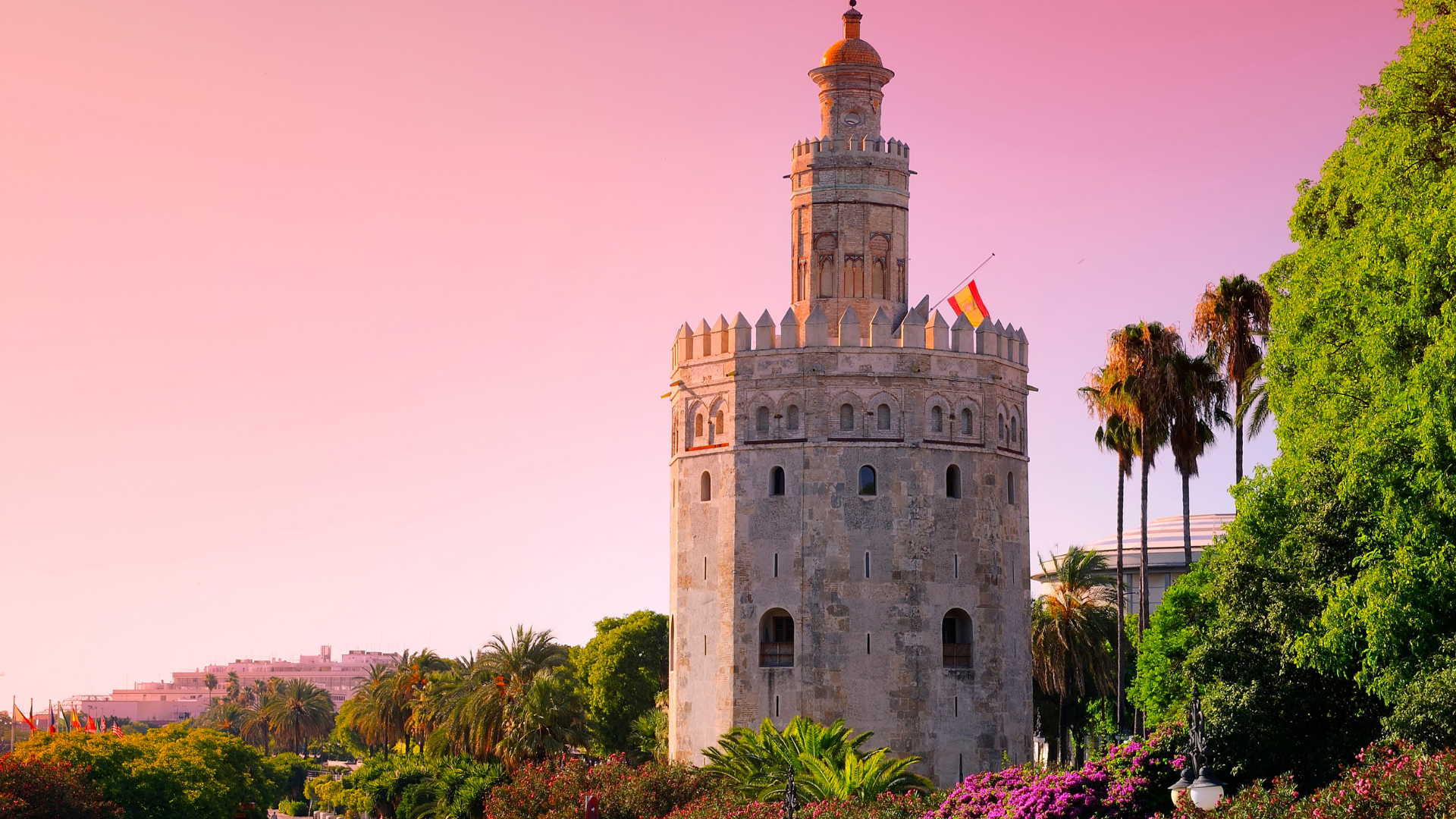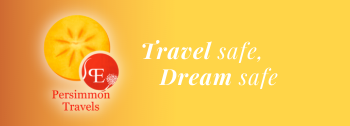SEVILLE
Seville like a Local:- What to do Where to go
- What to do Where to go
Stay with us to get to know the best tricks and places in Seville!
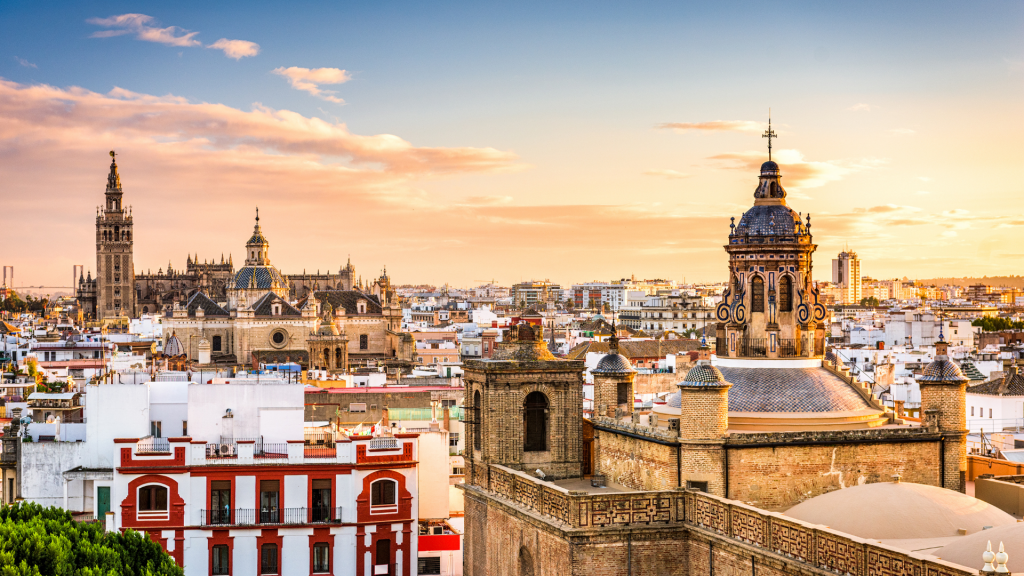
Seville is the capital of Andalusia, one of the southest regions in Spain. Their folklore and cheerful lifestyle is worldwide known but it is also home of the most recognizable spanish cultural elements.
SEVILLE IS DEFINITELY THE BEST WAY TO DIVE INTO SPANISH CULTURE
A city that lives for its own culture and quirks. Being the third most visited city in Spain and home of three World Heritage Sites declared by UNESCO in 1987, this city has no equal. Its outgoing people, its breathtaking architecture, its freedom. To understand the city from a historical perspective, Seville was for the 16th century what New York is for the current times. Being the economical centre of the world for more than a century has left in the city important landmarks, such the oldest active palace in Europe, the biggest gothic catholic cathedral in the World or one of the most important historic archives of American History.
The city definitely gives you a point of view that just a few cities in the world has. If these are not enough reasons to visit Seville, its nightlife, cultural offer, shops or events will convince you. Therefore, Seville is one of the cradles of flamenco, so is that it has its own type of dance, Sevillanas, which you can see -and dance- during the famed Feria de Abril.
HISTORY OF SEVILLE
The city comes from initial settlements around the sea located in which is today the Guadalquivir Valley. The founded city is thought to be known as Spal after the Phoenician colonisation of the Tartessia culture, the actual founding culture. Later, Roma conquered the city, giving the status of city and the name Hispalis: it is said, indeed, that Seville has two founders.
Subsequently with the fall of the Roman Empire, the Goth kings kept the city without much splendor until the arrival of the Muslims in the 8th century when the name of Isbilya was given to the city: it is at this time, where the different dynasties gave the Islamic touch to the constructions that we can observe, such as the Giralda, the Torre del Oro or the surrounding city walls. It is also easy to find traces of this era in diverse private and public building of the city.
With the conquest of the city by Ferdinand III -the Saint- in 1248, the court of Castilla was relocated to the city, expanding and remodeling the former arab royal palace, the so-called Alcazar, into an astonishing catholic-castilian palace but keeping intact the former one. Nowadays is considered the oldest active royal palace in Europe.
Seville has its ‘gold era’ in the sixteenth and seventeenth centuries as it was declared the only permitted harbour in Spain to trade with the new territories in America. The rich and prosperous development of the city -being the largest city and the economical centre of the country- can be seen in the large number of Renaissance palaces and Barroques nuidings, the immense number of churches of all styles and the Cathedral itself, which is the largest Gothic building in the world.
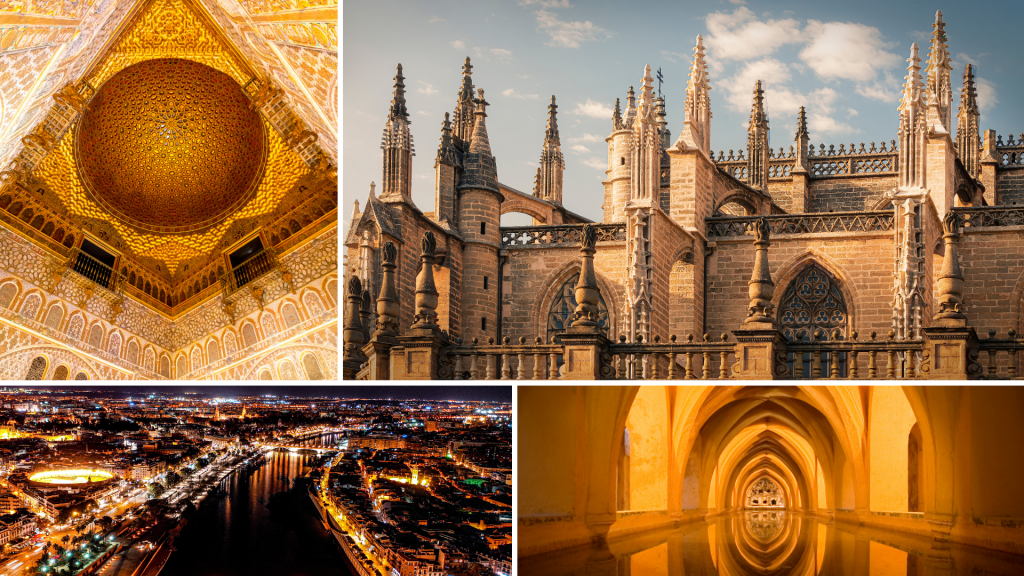
MUST-SEE MONUMENTS
With the brief historical introduction above, you are fully prepared to explore the city. Seville has an uncountable number of monuments and amazing architecture to discover. Nonetheless, there are some places that you cannot remove from your list. We will sum them up for you with some local tricks
SEVILLE CITY HALL
The city hall is meant for this city. Built during the 15th century, it clearly was a massive display of power and wealth of the city’s civil power. Supported economically by the American trade, the new high political power of the city decided to build a remarkable independent new space separated from the religion. This new space was placed in one of the commercial centres, the Plaza de San Francisco, and it definitely is an example of Plateresque architecture. We strongly recommend to visit the inside so that you can historically understand the importance of the city. Is this a very local thing? Not really, but Seville people see their city as the best in the world. If you understand the importance of the city, you will start thinking as a local.
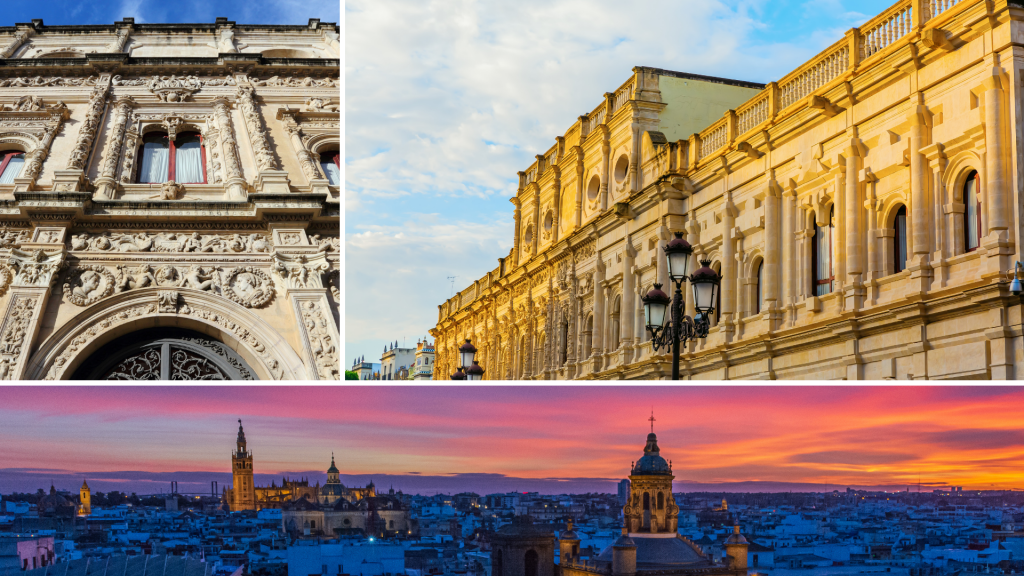
THE GIRALDA AND ITS SURROUNDINGS
It is definitely impossible not to see it. The Cathedral’s bell tower, better known as Giralda, can be noticed almost whenever you go in the city. Being the former minaret of the Ancient Mosque of Seville, it was built by the Arabs in 1184 which means this tower has almost 900 years of history. The tower has two perfectly defined parts: the Arab one (older, bottom part) and the Renaissance one (newer, top part). Taking a stroll all around the Cathedral will leave you speechless imagining the grandiosity of its construction. In front of the so-called Puerta del Perdón, one of the remaining doors of the former mosque, you can find the bar Las Escobas, founded in 1386 but not recognised as the oldest bar in Spain because it stopped its activity during the 20th century. Some of the activities we recommend are: Taking a picture of the Giralda from Placentines Street, having lunch or dinner in Mateos Gago Street or enjoying the view of the Cathedral, the Alcázar and the Archive of Indies from Plaza del Triunfo.
Lastly, the Santa Cruz Quarter, also known as Jewish Quarter, must be visited. This is known for being the oldest quarter in Seville where you can even find some Roman ruins. This quarter full of narrow streets and legends will transport you to the 16th century.
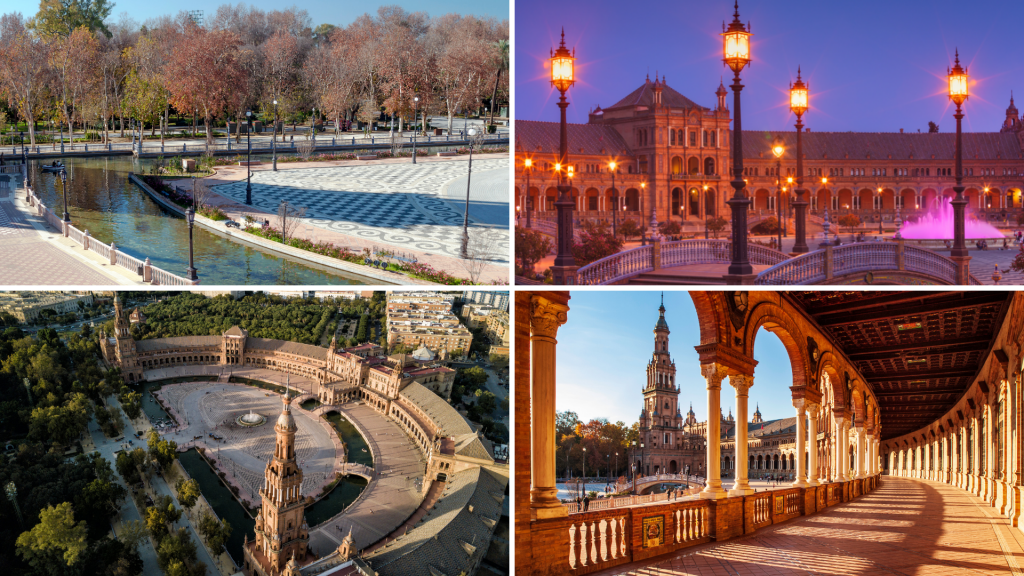
SPAIN SQUARE AND MARIA LUISA PARK
Impossible to forgot the most memorable monument in the city. The sevillian Plaza de España is worldwide known for its grandiosity and beauty. Built for the 1929 Iberoamerican Exhibition, this meaningful square is enclosed in the Maria Luisa Park where you can find the pavilions of the different Latinamerican countries. 49 provinces of Spain are represented in this semicirle shaped open-air space imitating a symbolic hug to all the countries’ pavilions in front of it.
Sevillians love to enjoy these views at any time, but, without a doubt, almost all of us have ever enjoyed a picnic in some area of the Maria Luisa Park.
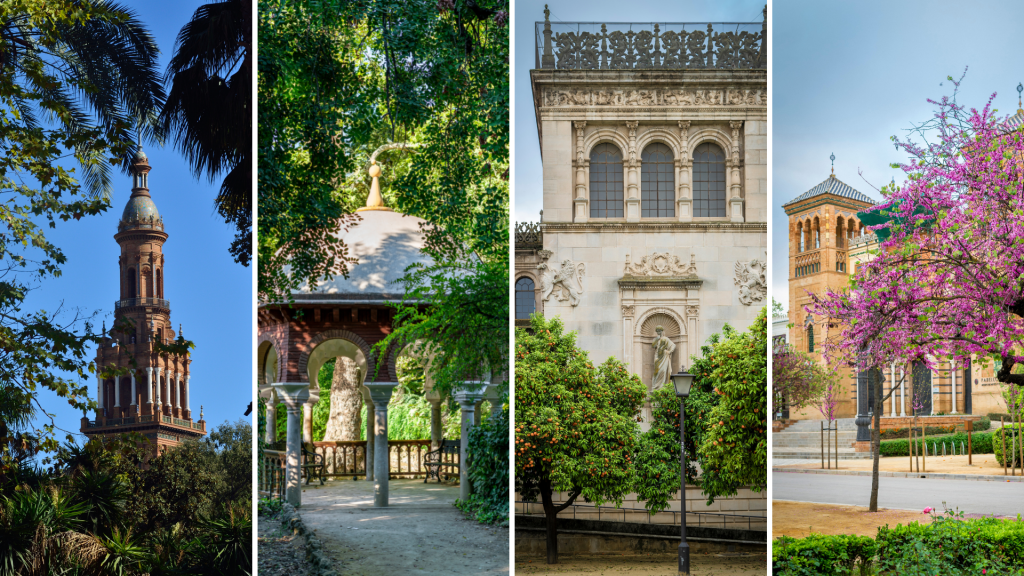
The Maria Luisa Park is one of the most important parks in Seville. LOcated right next to the city centre, it was designed by Jean-Claude Nicolás Forestier under the direction of Anibal González -architect of the Plaza de España-. Forestier was a very famous designer in Paris and was inspired by the Granada’s Generalife Gardens to create a very romantic atmosphere in accordance with the predominant European style.
Taking pictures with its European modern style streets or flowers is just unavoidable. Personal recommendation is to actually get lost in the park. It might seem like another big park but among its greenery you can find a lake with an island, peacocks, small temples, reading corners, or even a hill with a waterfall popularly known as the Monte Gurugú. It doesn’t matter where you are from, everybody get lost in the park! If you continue going south you will reach the Plaza de America, a square where different types of architecture are enjoyable, all built by the amazing Aníbal González. In this square, commonly known as Plaza de las Palomas –Pigeons Square-, it is almost compulsory to feed the pigeons. There is a small kiosk where you can buy small pieces of bread. Don’t get scared!
BACK TO THE CITY CENTRE
Seville is not just a bunch of monuments to visit once in a lifetime. The historic center of Seville includes landscapes, architecture and elements hidden among its streets that want to be found and enjoyed by people. Returning to the city center, we recommend a visit to the Palacio de San Telmo -current headquarters of the Presidency of the Junta de Andalucía-, the Old Royal Tobacco Factory -which was the most important industrial building of the 18th century- and finally, the Torre del Oro, a monument from the Muslim period that was the gateway to Seville during the city’s Golden Age.

THE END?
There is no end in Seville. This city is full of culture and events that you can enjoy, both in your day to day in the streets and through organized tours. We recommend in this case the so-called Menu Tour. This menu includes for only 10€ a complete tour of all the aforementioned monuments, accompanied by a professional and local guide who will discover the most spectacular secrets of Seville.

